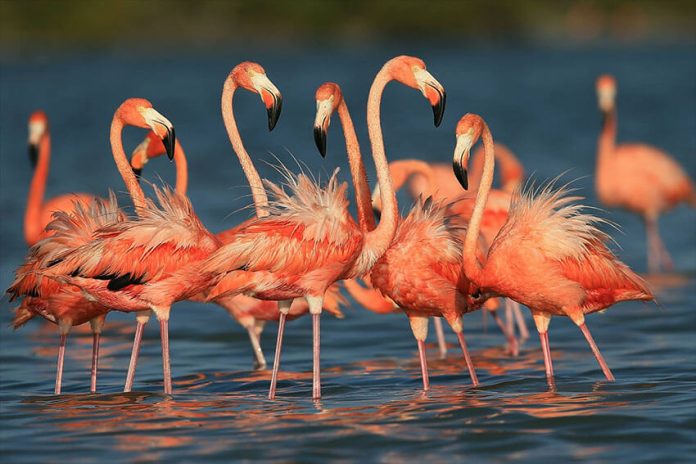Irresponsible tourism is a major factor in the decline of flamingos in nesting grounds in northeastern Yucatán, according to a local biologist.
The number of flamingos currently nesting on Yucatán’s western coast in the Ría Celestún Biosphere Reserve and on the state’s central northern coast in places such as San Crisanto is higher than in previous years, but the same can’t be said for the Ría Lagartos Biosphere Reserve and nearby areas. In fact, numbers are way down compared to last year.
There are currently about 1,000 to 2,000 flamingos at Ría Lagartos, according to experts, whereas there were some 30,000 at the same time last year, when the pandemic was still keeping tourist numbers down. Flamingo numbers are also severely diminished in places such as San Felipe, El Cuyo and Las Coloradas.
José Cruz Hoil Rajón, a biologist who has collaborated with environmental authorities at all three levels of government, told the newspaper Por Esto! that a variety of factors have caused flamingo numbers to fall in northeastern Yucatán.
He attributed significant blame to tour guides for taking tourists too close to the long-legged pink birds and disturbing their ecosystem. As a result, the flamingos feel threatened and choose to leave for quieter places where they can better protect their nests, Hoil said.
The biologist also said that the number of wild dogs and cats in the Ría Lagartos reserve has increased and that they attack and frighten off the American flamingos. Other factors that have contributed to the lower numbers include the illegal capture of the birds for trafficking purposes, contamination, climate change and tidal conditions, Hoil said.
He described the situation as concerning and urged tour guides and tourists to not go within 500 meters of the nesting flamingos. Instead of encroaching on their habitat, tourists should observe the birds from a distance with binoculars, Hoil said.
The biologist also urged citizens to report any suspicious people who may be invading flamingo habitats to capture the birds.
He said the drastic decline in the numbers is a threat to tourism in northeastern Yucatán, where the wading birds are a major attraction. Flamingos’ secretions and their gait help to improve water quality in salt marshes and the birds are an important part of the food chain, Hoil added.
Their absence on the coast of northeastern Yucatán would cause a biological imbalance and a reduction in much-needed tourism revenue, he said.
With reports from Por Esto!
